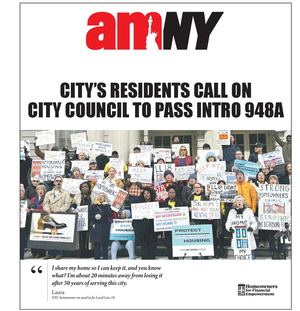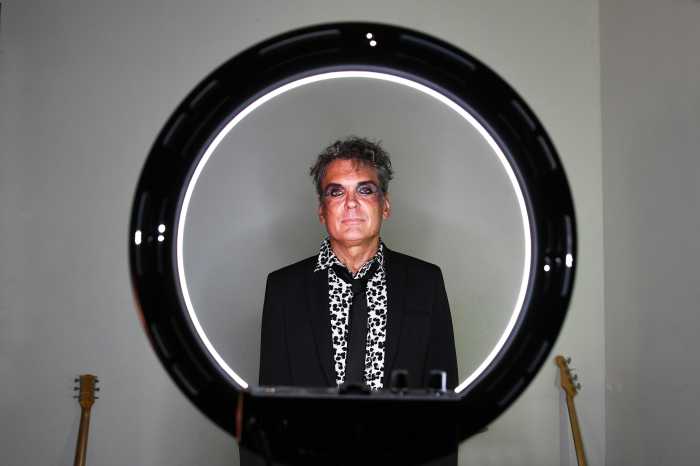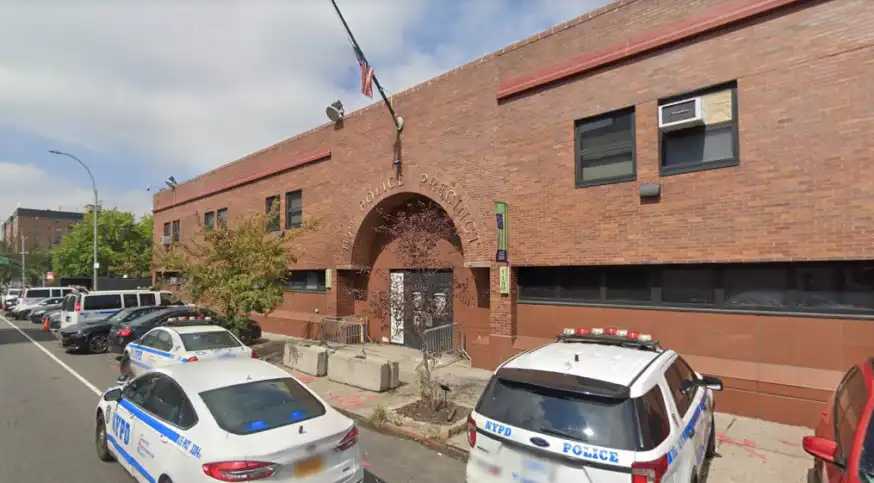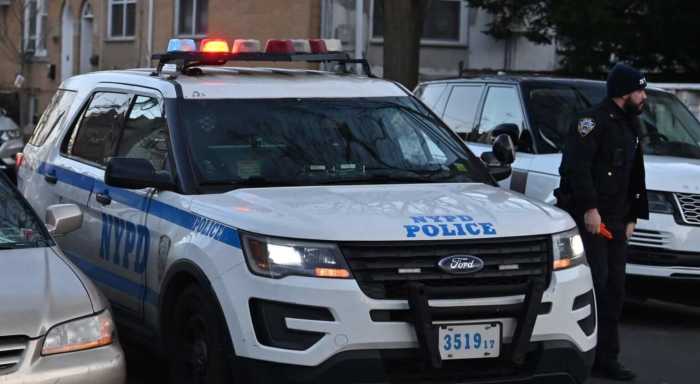The gulf between the railroads using Penn Station and the arena sitting on top of it, Madison Square Garden, was on full display Wednesday at a marathon public hearing of the City Planning Commission, where the transit agencies what they deem the Garden’s lack of compatibility with the train station as city officials weigh a permit renewal that could ultimately force it to relocate.
The World’s Most Famous Arena — home of the Knicks and Rangers, and America’s highest-grossing concert venue — is seeking a permanent “special permit” allowing it to operate an entertainment venue on the land above Penn Station. The current permit expires in July.
But local pols have called foul, arguing the arena’s continued presence atop the station kneecaps any attempt by the government to remake Penn Station from a maligned cavern to a transit hub befitting a city like New York. In March, the local community board recommended extending the Garden’s permit for three years on the condition it relocate afterwards.
Last week, the three transit agencies using Penn Station — the MTA, New Jersey Transit, and Amtrak — upped the stakes, releasing a report positing that the arena’s continued presence atop Penn Station isn’t “compatible” with the needs of the 600,000 daily commuters who use the terminal, nor with the railroads’ plans to reconstruct and expand it.
“MSG’s site plan and loading arrangements may have been compatible with Penn Station and the surrounding community in the early 1960s,” the report reads, referencing the destruction of the old, above-ground Penn Station and replacement with the new underground station, with the Garden on top.
“Today, however,” it continues, “MSG’s existing configuration and property boundaries impose severe constraints on the Station that impede the safe and efficient movement of passengers and restrict efforts to implement improvements, particularly at the street and platform levels, as this report will demonstrate.”
The three railroads collaborated to develop a “master plan” for the site, redesigning the station into one with plenty of space to move around and plenty of natural light to relieve the terminal’s depressing nature. The “key global constraint” inhibiting both the present Penn Station and any effort to improve it is the presence of the Garden on top of it, the report notes.
Despite that, the railroads are not outright calling on the Garden to move. At the City Planning Commission on Wednesday, the MTA’s Construction Chief Jamie Torres-Springer said the agencies are looking for a compromise. Among other things, he proposed that the railroads could build a brand new underground facility for MSG’s considerable cargo loading needs, which is presently done at street level and leads to significant truck traffic.
In exchange, the railroads want to take over MSG’s mid-block taxi stand, which has been unused since 9/11, and turn that land into a brand new train hall with a naturally-lit atrium, plus two new entrances on Eighth Avenue on land owned by MSG.
“We’re not saying MSG must move,” said Torres-Springer. “What we’re saying is that MSG must work with us to take steps to address these constraints and meet the needs of transit users.”
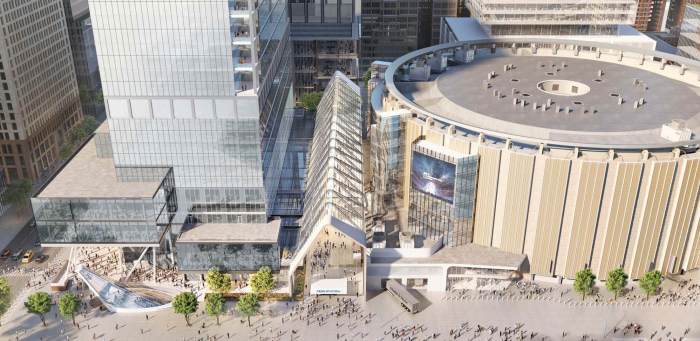
Reps for MSG, on the other hand, have not been willing to engage in horse trading, arguing that the railroads’ master plan is not detailed enough for them to comment and that the drama over the special permit renewal lends itself to uncertainty over the future of Penn and the Garden.
“The plan that they have in terms of their vision is a concept piece. It is not detailed,” said Rich Constable, MSG’s head of governmental affairs and social impact. “There’s no concrete engineering, no concrete mechanical, no concrete electrical, no concrete structural, that we can look at and respond to.”
Constable noted that MSG is a publicly traded company and as such, cannot stomach the level of disruption the MTA’s Penn plans would have in store, such as potentially a whole season of Rangers games having to relocate as crews upgrade Penn’s HVAC system.
Asked whether the Rangers could follow the example of the WNBA’s Liberty and move to the Barclays Center — which no longer has a home hockey team after the Islanders moved to Nassau County — Constable noted that Barclays is no longer an NHL-approved arena, but more importantly, staging games there would rob games of their “magic” factor.
“There is magic to being at the Garden,” said Constable. “So we would like to play all our games there.”
Torres-Springer slammed MSG’s equivocating as “absurd” and questioned if the railroads could ever provide a detailed enough proposal before the Garden opted to collaborate.
“The notion that MSG simply cannot even comment on whether the master plan would be good for Penn Station or MSG unless they have some unknown, unspecified amount of additional design is somewhat absurd,” he said. “And it makes one wonder why it is that they simply can’t do that right now, but perhaps they might be able to do it sometime in the future.”
Like MSG, the railroads say that continuing uncertainty and waiting is not an option, given the execrable state of Penn Station.
“The reason we’re not sort of waiting on should they go, should they move somewhere else, is we have 600,000 people in that station everyday, in a rabbit warren.” said Torres-Springer. “It’s unsafe, it’s undeserving of the quality and character of this city, and we want to fix it now, and we have a plan that allows us to fix it now…and we can do that with Madison Square Garden on the block.”
The Garden’s reps did not make further comment on its shocking statement at Community Board 5 in April that it would be willing to consider relocation, though only to a locale across Seventh Avenue that had not previously been discussed.
The Garden also didn’t comment on the alternative proposal by Italian engineering firm ASTM, which has the support of Manhattan Borough President Mark Levine and would see a new train hall built near Eighth Avenue, while allowing the Garden to remain in place.
The MTA has previously sneered at that plan, but Torres-Springer said it remains under consideration. It’s not the ideal plan, though, as it would involve the costly acquisition of MSG’s Hulu Theater, which would then be demolished to build the train hall.
ASTM’s architect for the proposal, Vishan Chakrabarti, joined MSG in lambasting the railroads’ master plan.
“It’s a conceptual plan,” said Chakrabarti. “I think if I drew that plan I’d lose my license.”
Read more: Hudson Yards Hotel-Casino Complex to Boost NYC Tourism
